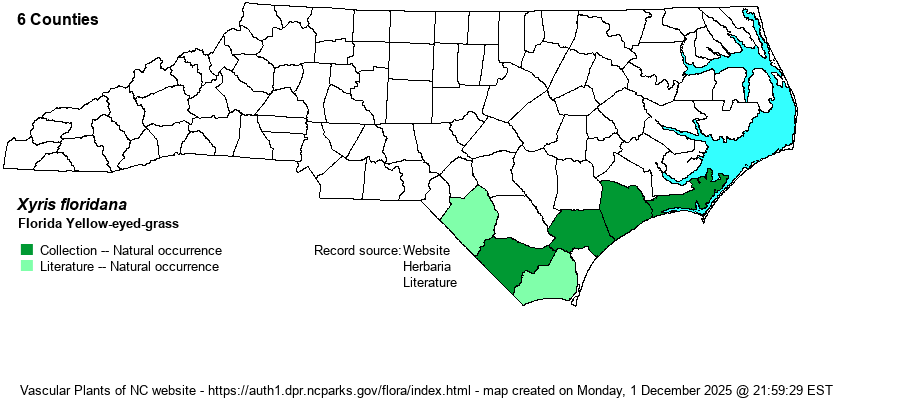Show/Hide Synonym
| taxonName | relationship | relatedTaxonName | relatedTaxonRefText | relComments |
|---|
|
|
| Xyris floridana | = | Xyris difformis var. floridana | Flora of North America (1993b, 1997, 2000, 2002a, 2002b, 2003a, 2004b, 2005, 2006a, 2006b, 2006c, 2007a, 2009, 2010) | | | Xyris floridana | = | Xyris difformis var. floridana | Godfrey and Wooten (1979, 1981) | | | Xyris floridana | = | Xyris difformis var. floridana | Kartesz (1999) | | | Xyris floridana | = | Xyris difformis var. floridana | Kral in Kubitzki (1998b). Key adapted from X, GW, and Z. | | | Source: Weakley's Flora |
|

